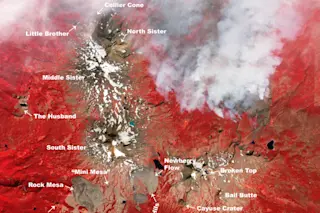A September 19, 2012 ASTER image of the Three Sisters region in Oregon. On the east side is a prominent wildfire in the Deschutes National Forest. Image: NASA Earth Observatory. I might be biased thanks to the fact I did my Ph.D. at Oregon State, but the central Oregon Cascades are one of my favorite places on the planet. Not only are they incredibly picturesque, but they also host a multitude of volcanic features. The other day, the NASA Earth Observatory posted a new image of the central Oregon Cascades around the Three Sisters, mostly to focus on the wildfire to the east of the Sisters and the glacial bodies that are found on some of the volcanic edifices. However, what I notice when you look at a satellite image of this area is how much volcanic activity is recorded in the landscape. I labeled as many volcanic features as ...
Three Sisters in Oregon: A Volcanic Gem
Explore the stunning Three Sisters region in Oregon, rich with volcanic features and breathtaking landscapes in central Oregon Cascades.
More on Discover
Stay Curious
SubscribeTo The Magazine
Save up to 40% off the cover price when you subscribe to Discover magazine.
Subscribe













